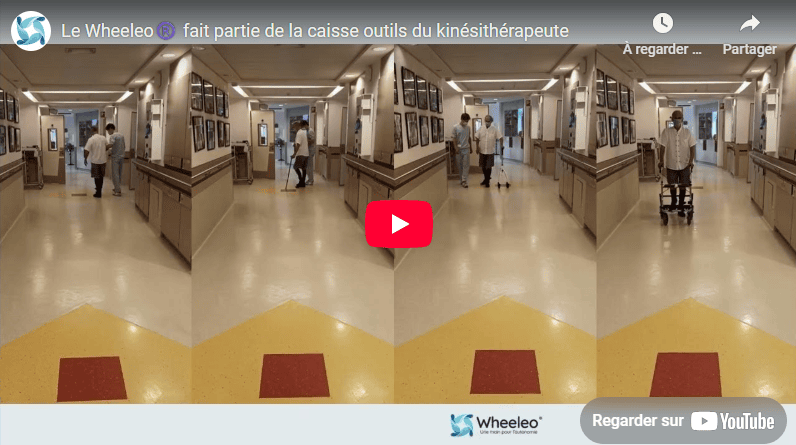
The Wheeleo® effectively complements the range of mobility aids. It serves as an essential intermediate step between a cane and a walker, depending on the patient’s profile. Whether it’s for age-related decline in abilities or to support progression as in the case of this patient with Guillain-Barré syndrome, the Wheeleo® finds its place and usefulness.
In this video, we observe a patient with Guillain-Barré syndrome evolving in four different walking situations: without technical aid, with a simple cane, with the one-handed walker Wheeleo® and with a four-wheeled walker.
The classic walker offers constant ground support thanks to its four wheels and two handles, maximizing stability and safety. It allows the patient to walk alone, without assistance.
In this case, it’s the mobility aid that boosts rehabilitation: walking alone all day promotes intensity, repetition, quality of movement, and generates essential positive reinforcement for recovery.
Note: This type of walker requires the use of both hands, which excludes certain patients such as those with hemiplegia.
The Wheeleo® allows the patient to walk alone but with support. This one-handed walker offers continuous and adjustable support that stimulates effort without compromising walking quality.
It constitutes a key step towards complete autonomy and is often the best solution for progressing towards unassisted walking.
The simple cane offers intermittent and less stable support. The patient is therefore more fragile and often requires direct assistance from the physiotherapist to ensure safety.
A three-step gait may appear, with a prolonged pause time in double support, which reduces the fluidity and quality of movement.
This mobility aid is less protective and can increase the risk of falling, especially if the quality of walking is still poor.
Finally, walking without technical aid shows an acceptable quality of movement, but the patient cannot walk alone safely. The physiotherapist must maintain balance, thus limiting independence.
To give the patient autonomy, it is fundamental to choose the easiest and most suitable aid for their level.
To stimulate the patient and support their progression, it’s necessary to favor a mobility aid that offers a good compromise between walking quality and a certain level of difficulty/intensity.
It’s a real balancing act between safety, quality, and effort that allows for optimizing rehabilitation.
The Wheeleo® thus emerges as a valuable and essential tool in the therapist’s toolkit, offering an intermediate and adaptable step to accompany each patient at their own pace.
Please fill in this short form so that we can contact you to arrange a test.